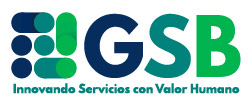 To put ourselves in context and align meanings, let’s look up what dictionaries say about motivation.
To put ourselves in context and align meanings, let’s look up what dictionaries say about motivation.
” Motivation is the action and effect of motivating. It is the motive or reason that causes the performance or omission of an action. It is a psychological component that orients, maintains and determines a person’s behavior”(significados.com).
The RAE indicates that motivation is: “1. To give cause or reason for something. 2. To give or explain one’s reason or motive for doing something. 3. To influence someone’s mind to proceed in a certain way. 4. To stimulate someone or awaken their interest”(RAE.es).
Motivation is the energy, the fuel that drives our actions.
It is known that working happily and motivated productivity, so ensuring that these emotions manifest themselves in a positive way is first and foremost the responsibility of the company. personal interest, as well as of our work teams and the organization.
At Agile we know that teams need motivated people, which is why principle 5 of the Agile Manifesto establishes: Projects are developed around motivated individuals. They must be given the environment and support they need and entrusted with the execution of the work.
Our work, related to software development, is an intellectual activity based on knowledge, logic and creation, where functional and technical profiles participate collaboratively, and whose productivity and performance depends largely on their level of integration and motivation.
First of all, there are extrinsic motivationsThese are those that lead people to perform activities for rewards, recognition or avoidance of external punishments, such as: working because you need the money, studying to get good grades or keep a scholarship, exercising because you want to lose weight, being on time to avoid a penalty, etc.
The intrinsic motivationsare inherent to what values and satisfies the person’s interests, such as: working because you contribute and learn, studying because you are curious and learning is a passion, exercising because it makes you feel good, arriving on time because you love what you are going to experience, etc.
To maintain a positive and sustainable motivation must include both extrinsic and intrinsic reasons, and an imbalance between them can cause negative effects. For example, an excess in extrinsic motivation, such as achieving the sprint points, can reduce the effect of an intrinsic one such as maintaining focus on technical excellence and software quality.
A leader agile should look for ways to increase intrinsic motivation. The theory of self-determination proposes the development of 3 areas: giving autonomy, develop competencies and promote healthy relationships with their environment, and other researchers add that they have a purpose, i.e., doing tasks with a meaning aligned to objectives and goals.
As important as motivating is not demotivate. The agile.projects website lists a set of demotivating events, such as: micromanagement, distrust, excessive control, not knowing the purpose of the work, frustration, failure to meet commitments, individual incentives that encourage competition and reduce the focus on teamwork, among others.
Let us analyze how Agile influences the motivation of individuals and work teams.
Agile…
1. Promotes autonomous and self-managed teams.
2. Provides a framework with clear practices, roles, events and artifacts.
3. Invite teams to establish, agree upon and follow their own rules.
4. Provides transparency by sharing across daily and sprint events, tasks, strategies and impediments.
5. Develops a transformational and servant leadership style.
6. Promotes multidisciplinarity and technical excellence through the development of technical and managerial competencies.
7. Promotes collaborative work and team building with purpose.
8. Focuses everyone’s work on delivering value to the organization.
9. Implements continuous improvement cycles based on retrospective sessions, where the team’s achievements are also recognized.
10. Encourages innovation by letting the team adapt its processes and build solutions based on its knowledge of business needs and requirements.
I invite you to reflect on your extrinsic and intrinsic motivations, and to know what motivates each of the people who work with you.
Get at Agile a source of values, principles and practices, centered on people, that will facilitate you to work with motivation and purpose.
María Esther Remedios
@soy.agile.coach




